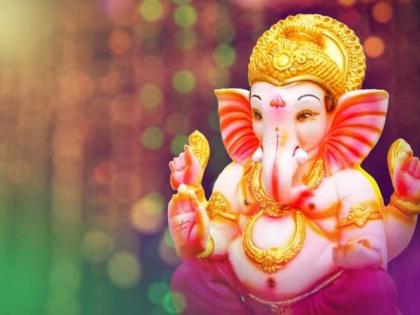Ganesh Chaturthi 2024: Eco-Friendly Tips to Welcome Ganpati and Protect the Environment
By Lokmat English Desk | Updated: September 2, 2024 10:33 IST2024-09-02T10:33:05+5:302024-09-02T10:33:22+5:30
As the season transitions, rain clouds begin their journey back home, the sun takes its time to rise in ...

Ganesh Chaturthi 2024: Eco-Friendly Tips to Welcome Ganpati and Protect the Environment
As the season transitions, rain clouds begin their journey back home, the sun takes its time to rise in the morning, and darkness falls earlier in the evening. This shift in nature's rhythm is a prelude to the festive season, a time of joy and celebration. According to Sanatan beliefs, worshiping Lord Ganesha is essential before any auspicious event, which is why the festive season kicks off with Ganesh Chaturthi. A few years ago, the Prime Minister, in his 'Mann Ki Baat' address, urged people to avoid using plaster of Paris (POP) for making idols, advocating instead for the use of eco-friendly clay.
Governments in Telangana, Maharashtra, and Rajasthan have issued orders to this effect, promoting the use of clay idols. However, in the capital, Delhi, POP idols are still being made and sold in various places, including along the road from Noida to Akshardham. This scenario is common across cities and towns throughout the country. This is just the beginning of a series of festivals, from Durga Puja and Navratri to Vishwakarma Puja, Diwali, and Holi, each representing a strong link in India's rich cultural traditions.
Also Read: Ganesh Chaturthi 2024: Shubh Muhurat and Auspicious Timing to Bring Ganpati Bappa Home
It is estimated that over 10 lakh idols are made annually during these three months, with 90 percent of them crafted from plaster of Paris. This results in several hundred tons of POP, chemical dyes, and worship materials being submerged in the country's lakes, rivers, and seas within ninety days. POP, a substance that doesn't degrade, poses a significant risk of increasing pollution levels in the environment. Plaster of Paris is Calcium Sulphate Hemihydrate, derived from Gypsum (Calcium Sulphate Dehydrate). Since most idols are made of water-insoluble POP and painted with non-biodegradable colors, the biological oxygen demand of the water decreases drastically after immersion, creating a hazardous situation for aquatic life.
Traditionally, during the monsoon, potters would collect fine clay from riverbanks—whether it was smooth, yellow, black, or red—and craft idols from it. After worship, these clay idols, along with offerings of food and fruit, would be immersed in water, providing nourishment for aquatic animals. It is well known that after August, fish eggs hatch, and the young fish need plenty of food. Fish and turtles, which help keep the water clean, benefit from these offerings. Therefore, it is vital that we return to the practice of using clay idols, returning soil to soil, to protect our environment and maintain the balance of our ecosystem.
Open in app